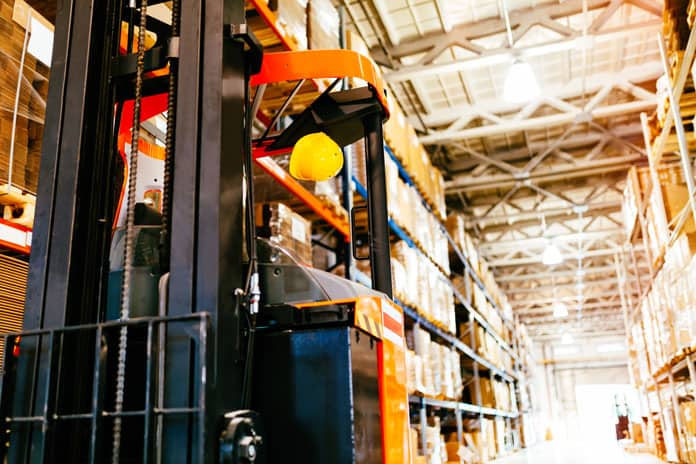Electric forklifts often feature advanced transmission systems, such as the DANA hydraulic automatic transmission, to optimize performance and efficiency. This transmission system is equipped with four forward gears and four reverse gears, providing a wide range of speed and torque options.
The DANA transmission offers two shifting modes: manual and automatic. Drivers can switch between these modes using a single electrical switch, closing the switch for manual mode and opening it for automatic mode.
In automatic mode, the transmission system can operate independently based on the driver’s input (throttle position) and the forklift’s driving conditions (engine speed, turbine speed, vehicle speed, and gear). Corresponding actuators (throttle actuator, lock-up actuator, and gear selection actuator) work in conjunction with various sensors to provide the necessary signals to the Electronic Control Unit (ECU).
The sensors, including the throttle position sensor, pump turbine speed sensor, vehicle speed sensor, and gear selector, feed data to the ECU. The ECU then controls the opening and closing of solenoid valves to engage the clutch or brake, enabling automatic gear shifting and lock-up/release of the hydraulic torque converter.
The following are some common causes of shift failure in electric forklifts:
1.Hydraulic Fluid Degradation:
- The hydraulic fluid used in the transmission system can degrade over time due to heat, contamination, and normal wear.
- Degraded fluid can lead to increased friction, wear on components, and ultimately, transmission issues like gear slippage or erratic shifting.
- Regularly monitoring the fluid condition and changing it as per the manufacturer’s recommendations is crucial.
2.Clutch and Brake Wear:
- The clutch and brake components within the transmission are responsible for engaging and disengaging the gears.
- Over time, these components can wear down, leading to slipping, dragging, or premature disengagement.
- Inspecting the clutch and brake linings, and replacing them when necessary, helps maintain proper gear shifting performance.
3.Gear Wear and Damage:
- The gears themselves can experience wear and tear, especially if the transmission is subjected to heavy loads or improper shifting practices.
- Worn or damaged gears can cause gear jumping, grinding, or inability to engage properly.
- Periodic inspection of the gears and replacement of any damaged components is important.
4.Linkage and Mounting Issues:
- The mechanical linkages that connect the operator controls to the transmission components can become worn or misaligned over time.
- Problems with the mounting of the transmission or associated components can also affect gear shifting.
- Ensuring proper adjustment and tightness of all linkages and mounting points can help prevent shifting issues.
5.Electrical and Control System Faults:
- In addition to the sensor issues discussed earlier, other electrical or control system problems can impact the transmission’s performance.
- Faulty wiring, loose connections, or malfunctioning control modules can disrupt the communication between the various system components.
- Thorough electrical testing and troubleshooting may be required to identify and resolve these types of issues.
6.Diagnosis method
Inspect the gear shift mode switch:
- Use a multimeter to verify the proper functioning of the manual and automatic mode switching logic.
Examine the throttle pedal switch:
- Ensure the accelerator pedal switch is operating correctly, providing the appropriate signals to the ECU for gear shifting.
Test the transmission sensors:
- The DANA transmission is equipped with three electromagnetic sensors: the throttle position sensor, the pump turbine speed sensor, and the output speed sensors.
- Measure the resistance of these sensors using a multimeter. The on-site measurement revealed that the turbine pump speed sensor had an infinite resistance, indicating a sensor fault.
After replacing the faulty turbine pump speed sensor, the transmission returned to normal operation. This demonstrates the importance of thoroughly investigating sensor and component issues when troubleshooting gear shifting problems in electric forklifts.
By following a systematic diagnostic approach and addressing any underlying sensor or component failures, operators can ensure reliable and efficient gear shifting performance, optimizing the electric forklift’s capabilities.



